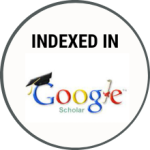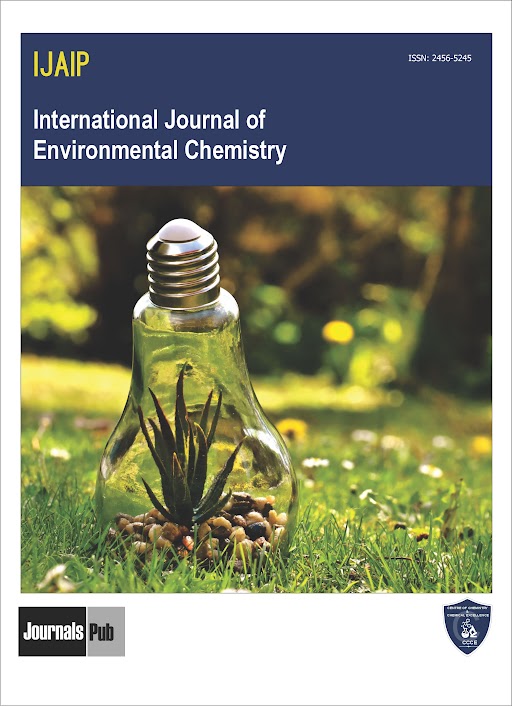Editor Overview
IJEC maintains an Editorial Board of practicing researchers from around the world, to ensure manuscripts are handled by editors who are experts in the field of study.
Publisher
JournalsPubAn Imprint of Dhruv Infosystems Pvt Ltd
A-118, 1st Floor, Sector-63, Noida, U.P. India,Pin-201301
E-mail: [email protected]
(Tel):
(Mob) (+91) 9810078958, +919667725932
Focus and Scope

About the Journal
International Journal of Environmental Chemistry aims to serve as a platform for the dissemination of innovative ideas and research in entire areas of Environmental Chemistry. Aim and Objective is to create interest among Researcher Scholars in Environmental Chemistry dealing with the atmospheric, aquatic and soil chemistry, as well as profoundly depend on Environmental Sciences. Environmental chemistry is an interdisciplinary science that includes the chemical processes occurring in the environment which are impacted by humankind’s activities. All manuscripts go through a rigorous peer review process. Journal targets to publish original, high quality papers that are peer-reviewed by our expert editorial team to ensure the publication of only good quality papers.
Focus and Scope
- Air quality monitoring: Air Quality; Urban air quality; air quality measurement systems, machine learning; deep learning; calibration; air quality; low-cost sensors; exposure assessment, air pollution; air quality standard; spatial pattern; variability; human health protection, air detector, UPLC-MS/MS; mycotoxins; feedstuffs; flow-through; multiple analysis, Air Quality; Gaseous Pollutants; air quality; air pollution measurements; electrochemical sensors; low-cost sensors; AQI (Air Quality Index); Athens, air quality monitoring; PM2.5; sustainable development goals; SDG indicator, air pollutant prediction; multi-task learning; regularization; analytical solution.
- Soil and water management: Water in the soil; surface irrigation; water storage; irrigation modeling; soil hydrodynamics, climate change; water cycle; downscaling; hydrological model; Yangtze River; Yellow River; reanalysis climate data; hydrologic modeling; comparative analysis, climate change; evapotranspiration; IHACRES model; rainfall; runoff; quantile mapping, Ag/MgAl2O4; characterization; activity; Photocatalytic degradation; Methylene blue, surface water; Tibetan Plateau pastoral area; Xiahe County; hydrochemical characteristics; fuzzy comprehensive method; water quality, oilfield produced water; wastewater; heavy metals; irrigation; bioaccumulation; soil health; California, 4-pyrones; diynones; water; transition-metal-free, extractive electrospray ionization; rapid detection; malachite green; water; mass spectrometry, water; local order; relaxation times; self-diffusion; hydrophobic effect.
- Wastewater treatment and reuse: Chromium; precipitation; tanning; leather industries; wastewater; sodium hydroxide, membrane bioreactor (MBR); wastewater; rotating membranes; static membranes; fouling; modeling, membrane bio-reactor (MBR); ozone oxidation; paper and papermill; fluorescent whitening agents; water reuse, liquid chromatography-tandem mass spectrometry; pharmaceuticals; wastewater analysis; solid phase extraction, Heavy metal; Agricultural waste; Low-cost adsorbent; Wastewater; Toxicity, monodisperse silica nanospheres; supported platinum(IV) complex; peptide; intramolecular disulfide; reusability, microplastics; analysis; waste treatment; food; diet.
- Disposal and recycling of waste: Gallium nitride; gallium; LED waste; LED recycling; leaching, waste cooking oil; volatiles; 1H NMR; mass spectrometry; prototype, Attitudes; Behaviour; Communication; Information; Prompts; Policy; Recycling; Waste, electrical and electronic waste; recycling; legislative frameworks; environmental management; landfilling, Pharmaceutical waste; Sources; Cost of disposal; Management; Impact; Pharmacists, Municipal solid waste, Explores Policy, policy options, Targeting Lead, Reduce Lead, solid waste, recycled, waste, Constraint Analysis, Recycling Its Waste, Output Constraint, Cournot Model, Coproduce, coproduct, optimal.
- Environmental quality parameters: Water quality; model calibration; estuary; eutrophication; CE-QUAL-W2; phytoplankton, algal growth kinetics, Environmental quality, quality of life, lecture, Economic Implications, Briefly Review, Broad Terms, Public Issues, Economics of Environmental, Quality The objectives, Environmental quality; institutional quality; ethnic conflicts; socio-economic factors, sustainable development goals (SDGs); sustainability reporting; quality, environmental and occupational health, and safety; certified organizations, Quality of economic growth; environmental regulation; technological innovation.
- Bio-monitoring: BIOLOGY, Agricultural Sciences & Agronomy, Capsicum annuum; flavonoids; fluorescence monitoring; bio-waste utilization, Bacteriophages; Bio-control; E. coli O157:H7; Podoviridae; TEM, safety, metabolites, Human biomonitoring, optimized, conjugates, Biomonitoring Methods, Use of APAP, targeted analyses, Using non targeted, contaminants, warning biomonitoring technology, early warning biomonitoring, multi-species, Environmental DNA, biomonitoring, marine, reproducibility, variability,indicator-taxa, Active biomonitoring, Dynamic MRM, housekeeping peptides, environmental molecular markers, Gammarus fossarum.
- Pollution prevention: Water quality; multivariate statistical analysis; river pollution index; pollution source apportionment, flood; disaster prevention; emergency response; decision making, Google earth engine, Plastic pollution; waste management; environmental behavior; recycling, Spatial effects; environmental pollution; Pollution dispersion; PM10; air quality; Land Use Regression; Symos’97, Air pollution; environmental hazards; Volatile Organic Compounds.
- Safety and sustainability of the environment: Temperature; precipitation; Ethiopia; Mann Kendall; climate variability, Precipitation; Tibetan Plateau; trends; temporal-spatial distribution; hydrological cycle; evapotranspiration; climatic change; drought/wet; Songnen Grassland, Sustainability, Environment, Reverse Supply Chain, Poultry Industry, International Investment Agreement, International Investment Agreement, China, Chinese, WTO, World Trade Organization, Bilateral Investment Treaty, Bilateral Investment Treaties, Health, Safety, Environment, Environmental, Clauses, Domestic Regulation, Investment Treaties.
- Pesticides: Largest Pesticide Using, Pesticide Using Country, Health Pesticides, Rice Production, Farm Pesticide, Protect Crops/pesticide use, Drift Liability, Pesticide Drift, Understanding Pesticide, pesticide applicators, Farmers Homeowners, garden, Landowners, Organophosphate Pesticide Levels, organophosphate pesticides, Farmers Planting Mimosa, pesticides, Urine, pond, Function, Beijing, pesticide use, Grain production, Pesticide Overuse, grant, pesticides, and grain products.
Open Access Statement
IJEC is an open-access (OA) publication which provides immediate open access to its content on the principle that making research freely available to the public supports a greater global exchange of knowledge. All published works will be available to a worldwide audience, free, immediately upon publication. Publication in the journal is subject to payment of an article processing charge (APC). The APC serves to support the journal and ensures that articles are freely accessible online in perpetuity under a Creative Commons licenses.
Publication Ethics Statement
IJEC fully adhere to Code of Conduct of Publication Ethics (COPE) and to its Best Practice Guidelines. The Editorial Team enforces a rigorous peer-review process with strict ethical policies and standards to ensure the addition of high-quality scientific studies to the field of scholarly publication. In cases where ctit becomes aware of ethical issues, it is committed to investigating and taking necessary actions to maintain the integrity of the literature and ensure the safety of research participants. Click here to read more about the Research & Publication virtue ethics
Content Disclaimer
All IJEC the information’s, opinions, and views mentioned here represents the authors and the contributions of the articles. Publication of articles, advertisements, or product information does not constitute endorsement or approval by the journal. cannot be help responsible for any error or consequences while using the information updated in this journal. Although every effort is done by ctit to see that there’s no any inaccurate data, misleading data, opinion or statement within the journal, the data and opinions appearing in the articles are the responsibility of the contributors concerned.



